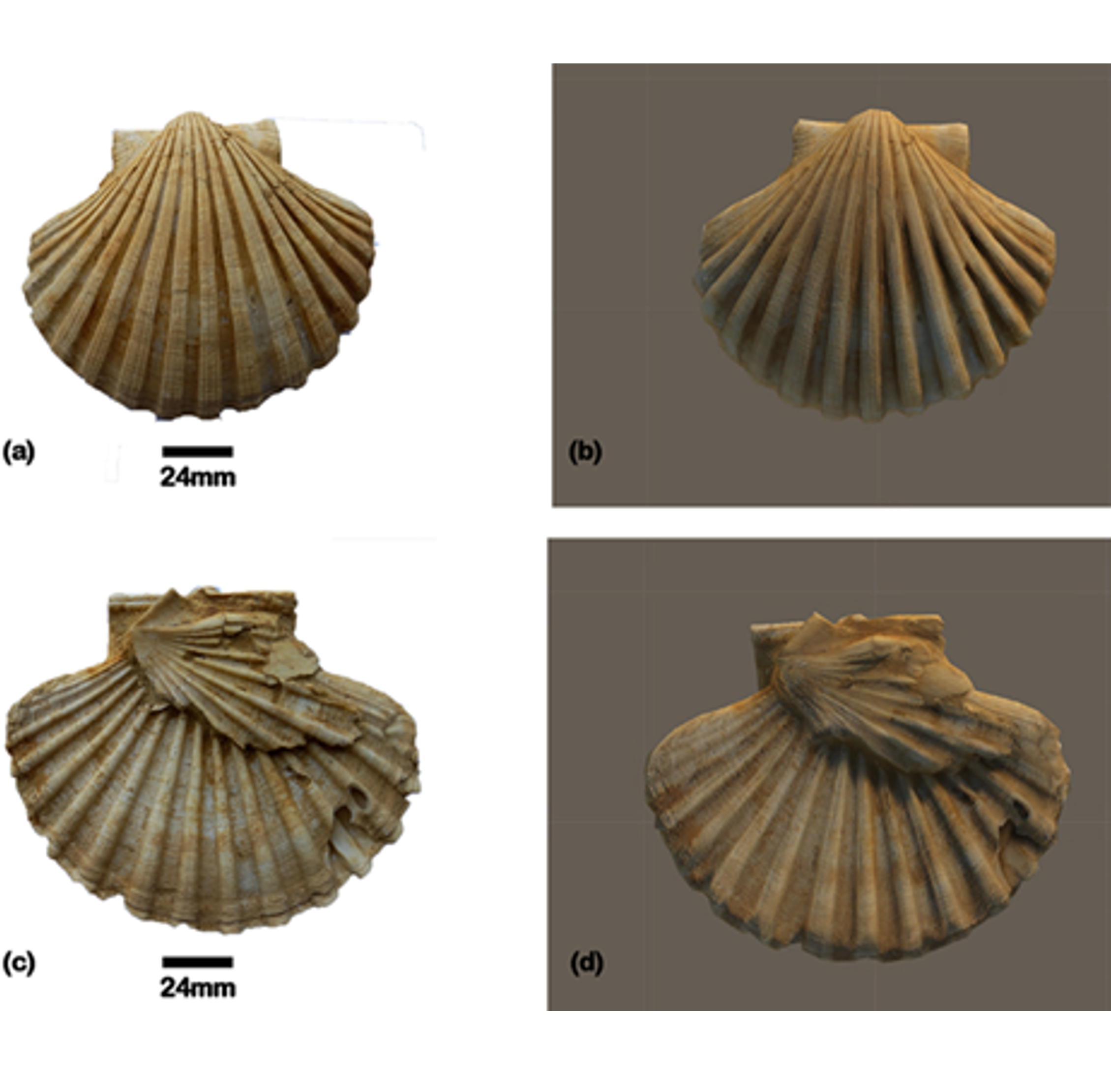Augmented fossil tour, an AR application for exploring and studying fossils

Abstract
Fossils constitute a significant part of Earth's biodiversity, holding considerable heritage value. With an aim of improving and enhancing dissemination of knowledge and by integrating augmented reality technologies, this paper presents an AR application to identify fossils in two fossil sites, that of Agia Marina (Aegina Island) and Rafina (Attiki peninsula). An application compatible to mobile devices that enables the user to identify the fossils in situ, promoting learning through interactive experiences. It offers virtual tours that transport users back in time to the paleo environments where these fossils were originally found. This application seeks to make science, and especially paleontology, accessible and engaging to a wide range of people. To achieve this, we employed advanced photogrammetry techniques. By utilizing these methods, we were able to create detailed and accurate 3D models of marine fossils and environments. This approach not only enhances the visual representation of these paleo-environments but also provides precise data for scientific analysis and educational purposes. The AFT project allows us to capture the intricacies of invertebrate species and their habitats, ensuring that their importance within the marine ecosystem is effectively communicated and appreciated by a wider audience.
Article Details
- How to Cite
-
Liakopoulou, D., Giamali, C., Galanopoulos , E., Kaddas , P., Karydas , N., Iakovidis , A., Paraskevopoulos , K., Kontakiotis , G., Lyras , G., Besiou , E., Skampa , E., Panagiotopoulos , I. P., Moforis , L., Alexoudi , V., Grambas , A., Vaptisma , A., & Antonarakou , A. (2024). Augmented fossil tour, an AR application for exploring and studying fossils. Bulletin of the Geological Society of Greece, 61(1), 80–98. https://doi.org/10.12681/bgsg.38549
- Section
- Palaeontology, Stratigraphy and Sedimentology

This work is licensed under a Creative Commons Attribution-NonCommercial 4.0 International License.
Authors who publish with this journal agree to the following terms:
Authors retain copyright and grant the journal right of first publication with the work simultaneously licensed under a Creative Commons Attribution Non-Commercial License that allows others to share the work with an acknowledgement of the work's authorship and initial publication in this journal.
Authors are able to enter into separate, additional contractual arrangements for the non-exclusive distribution of the journal's published version of the work (e.g. post it to an institutional repository or publish it in a book), with an acknowledgement of its initial publication in this journal. Authors are permitted and encouraged to post their work online (preferably in institutional repositories or on their website) prior to and during the submission process, as it can lead to productive exchanges, as well as earlier and greater citation of published work.



